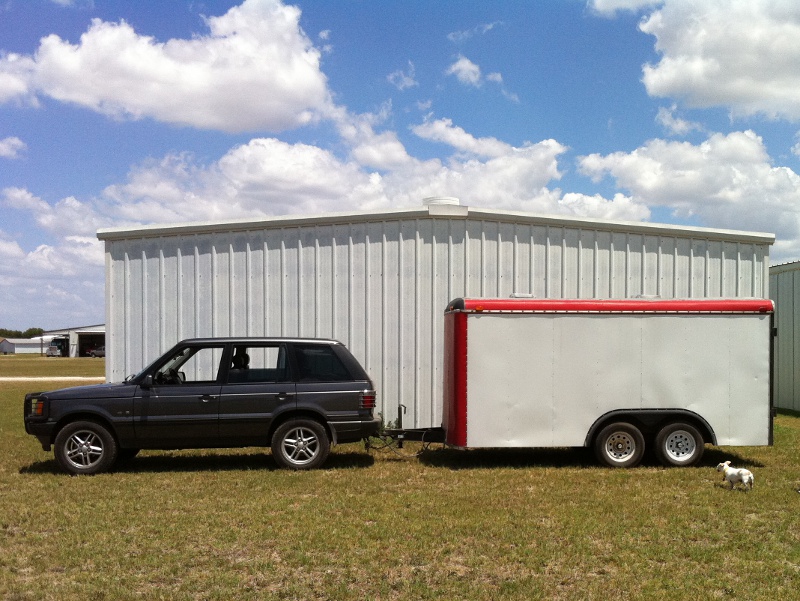Measuring trailer tongue weight with a bathroom scale
Our 2000 Land Rover Range Rover has a maximum tongue weight (TW) of 550 lbs on the receiver hitch and a maximum gross trailer weight (GTW) of 6500 lbs with brakes. Vehicles with conventional leaf or coil springs can be calibrated by standing on the ball mount and measuring the drop in hitch or bumper height. However, that approach is not very accurate and it may not be linear. Also, our tow vehicle has air springs that further complicate attempts to estimate tongue weight using the rear bumper or hitch height. So, how do you measure the actual tongue weight of a loaded trailer? Some high-capacity hydraulic scales are available for well over $100. The alternative is to use a common bathroom scale, a concrete block, some 4x4 wood, two lengths of pipe, and some math.
I found various poor quality diagrams about this idea on line, but they were not accompanied with any explanations or detail. The idea is to set the tongue of the trailer onto a beam that spreads the load between the common bathroom scale and another support point. The load seen by the scale is the ratio of the scale to support distance and the tongue to support distance. If there is a 2' scale-support gap and a 1' tongue-support gap, a 2:1 ratio exists. This means that the scale will only support 1/2 of the tongue weight. If there is a 4' scale-support gap and a 1' tongue-support gap, a 4:1 ratio exists. This means that the scale will only support 1/4 of the tongue weight. I chose a 4:1 ratio for my beam so my 250 lb capacity scale can measure 1000 lbs (250x4) of tongue weight.
Chock the trailer wheels before attempting any measurement!
It is important for the trailer to be level in transit, so choose your ball mount accordingly. Any change in ball mount height, especially with tandem axle trailers, will change the tongue weight. Assuming you have all of that in order, create a tongue support that will be close to the same height as your ball mount while loaded. A picture is worth 1000 words, so here you go:
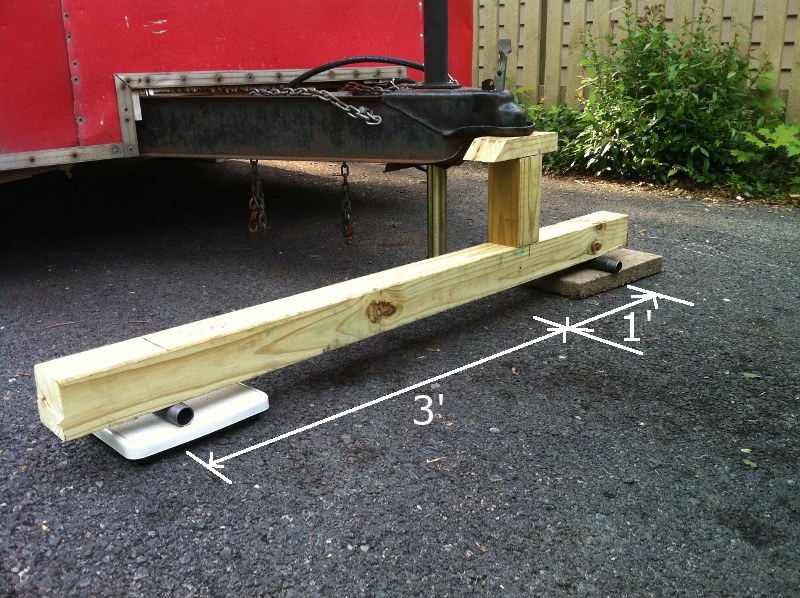
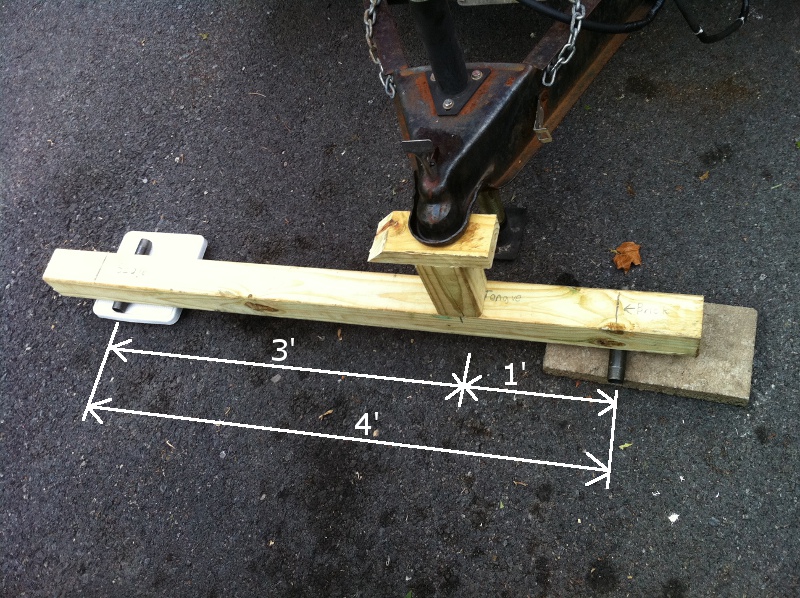
The pipes are there for easy adjustment and to provide movable point-loads. One pipe also spreads the point load across the scale, which is important if you use a cheap plastic scale like I did. Proper alignment insures better accuracy.
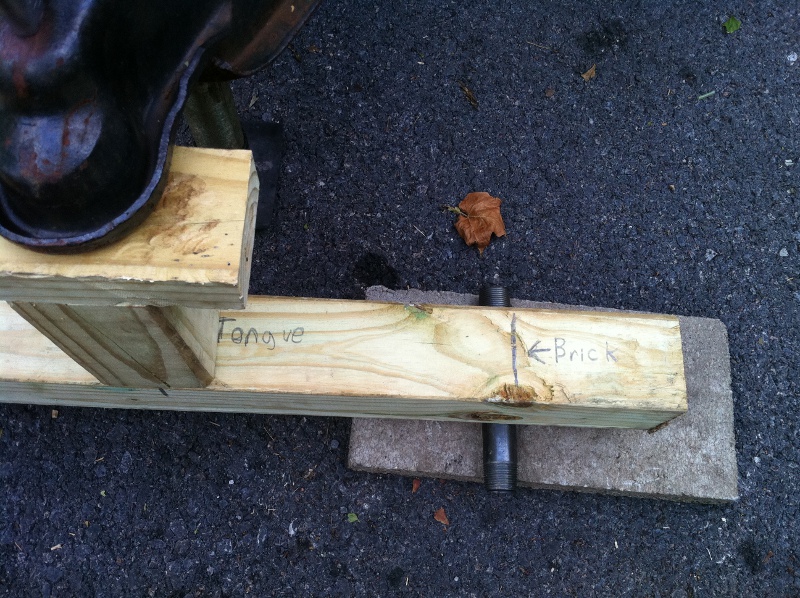
Tare/zero the scale after setting the beam and pipe on it. After weighing myself directly on the scale, I checked to make sure the setup was accurate. I carefully stood on the beam at the tongue location while steadying myself to prevent the pipes from rolling. I weighed almost exactly 200 lbs and the sale read almost exactly 50 lbs, so the 4:1 ratio and accuracy were confirmed. Next I repeated the measurement while holding a 40 lb weight and the scale read exactly 10 lbs higher. Lower the trailer tongue with the jack slowly and watch your toes. You only need to retract the jack enough so all of the load is on the beam and the reading on the scale stops increasing. Leave it most of the way down as an extra support in case something slips or breaks. This next picture shows the scale reading after we positioned two motorcycles and some additional stuff in the trailer. The scale read about 98 lbs, which means the tongue weight was about 392 lbs (98x4). The gross trailer weight for this measurement was about 3400 lbs (2000+450+650+300), so the tongue weight was about 11.5%, which is right in the 10-15% range that many people recommend. The maximum specs for our Rover are 550 lbs TW and 6500 lbs GTW, which works out to about 8.5% TW that I would consider to be the minimum percentage.
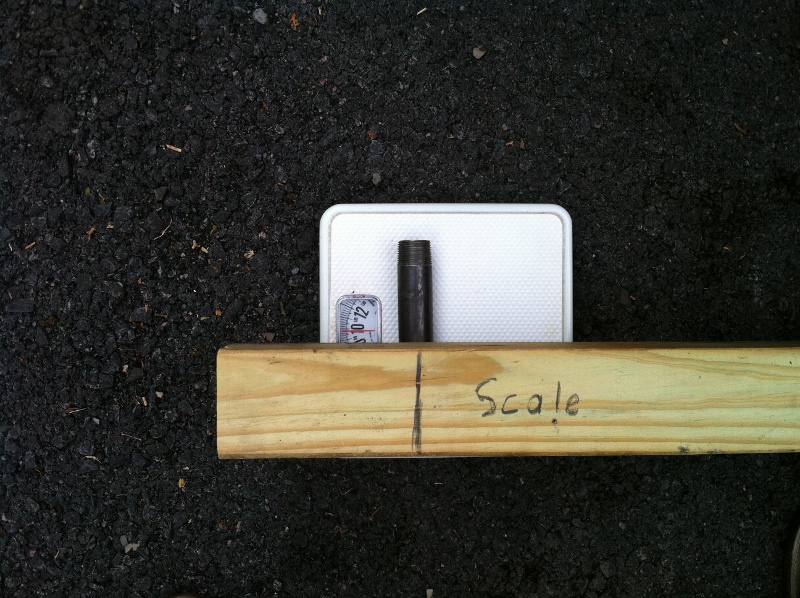
Here is our properly loaded and nearly level trailer setup. The air suspension completely eliminates rear-end squat under load. After towing approximately 4000 lbs GTW at 450 lbs TW 2000 miles from 13066 to 78240, in 100 F late-July heat, with the back seats and trunk full of cargo, and averaging 13 MPG, I must say that the P38A generation Range Rover 4.6 is an excellent tow vehicle.
